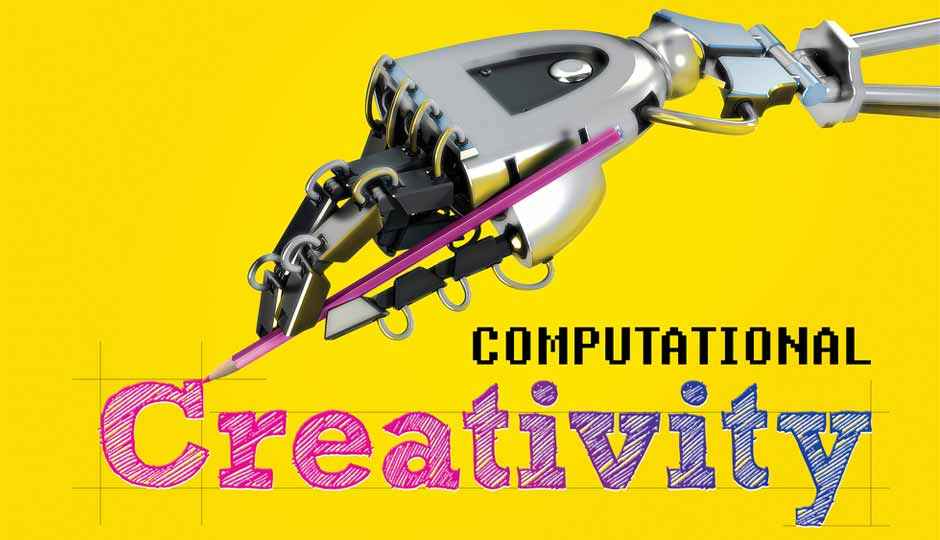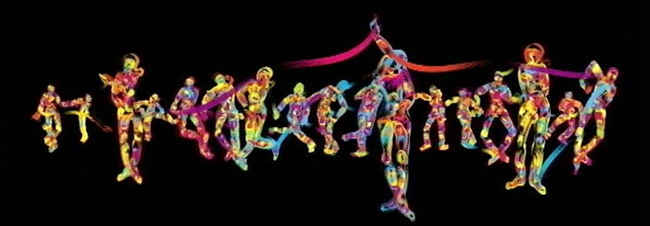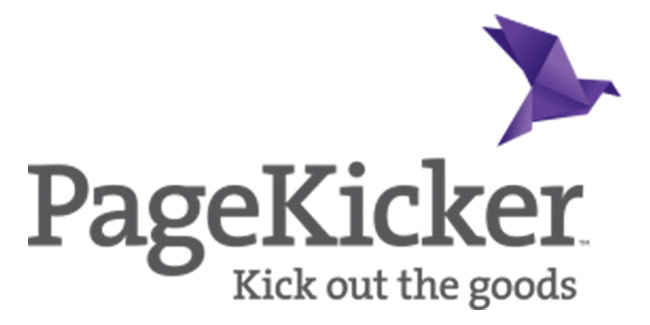How creative can computers be?
As implausible as it sounds, could it really be a thing?

Before we’ve even begun, we know what you are thinking. “The heart and soul of a creative human being can never be replaced by a machine.”
 Survey
SurveyWell, imagine walking into an art gallery replete with critics and journalists hustling and bustling all around. Imagine being transfixed by one particular painting which seems to allude to different instances of war in a mix of colour and strokes. You are moved by the painting and so you look at the nameplate to see who created it, where it’s written ‘The Painting Fool.’ It takes you a minute but you realise what that is – it’s a program created to produce art. Now you look back at the painting – can you look at it the same way?
What we described above isn’t a hackneyed plot of a low budget sci-fi film set in the near but unrealistic future – it is happening right now.
Recently, Google’s AlphaGo program, a machine which has learnt the game by being fed millions of instances of GO matches in addition to playing against tweaked versions of itself, beat the world Go champion 4-1, and at the same time ticked off Facebook’s director of artificial intelligence research who apparently was building the same machine but had not achieved anything cool with it yet. The victory was not the highlight though. The computer played a certain move in the second round which was considered strange and almost wrong at first, but revealed itself to be an excellent move as the game progressed. This got everyone scratching their heads and once again brought the idea about machines being creative back into focus. How did the machine surprise us like that with a move which goes against all that we knew about the game? (More about the game and the victory here and here)
So can machines truly be creative?
Before we head there, have a look at the heart of this hype – something known as machine learning.
Machine learning is a type of artificial intelligence which provides computers that uncanny ability to understand data and take further action without being explicitly programmed. The process traditionally begins with it looking for patterns in data. However, instead of merely removing that data and placing it in the hands of us human beings, it goes a step further. Machine learning implies that the machine uses this data to adjust its own actions, and thus change and grow.
And then he said, “My computer plays better than you"
Have a look at the kind of e-Artists machine learning has helped create, and what these machines in turn have created.
Computer generated music: We now have Liquid Notes and Maestro Genesis which the creators claim are tools which allow a music composer to go further than he or she has been before, and with more ease. These programs, simply put, receive a few inputs from the composer about a particular musical technique and goes on to produce virtual instrument sounds in a large number of variations, giving the composer an idea of how his work will sound without the grunt work behind it. 0music, an album composed entirely by AI Melomics109, sounds a bit like overly dramatic elevator music but is undeniably an achievement in the arts and, if nothing else, could at least be the end of the Kenny Gs we are forced to endure while trying not to breathe in a closed compartment full
of strangers. (Listen to 0music here)
Painting: You would be right in thinking that painting is a very far-fetched concept for a computer to excel it. It’s subjective, can be bizarre, and ties in all the culture, art, and psychology one knows onto a canvas in what can be an abstract manner. This didn’t stop these guys from trying to do something similar though. The manner in which this was done initially was that the artist comes up with a concept, and then the algorithm generates the visuals for these either beginning from nothing at all or from pre-existing material. Art creating program AARON though, aims to do a bit more. Its creator, Harold Cohen, wanted that dependence on the human to be minimised so that it can be called an artist in its own right, sans the mood swings. He did this by teaching the robot about object and body elements and the relationship between them, instead of merely feeding it images. This means that the program can draw a table or, say, a cat, not because it knows exactly how it looks, but because it knows what the relationship between different elements in a cat and a table is like, resulting in some cool avant-garde art. Over four decades, the machine learned to place objects or people in a three-dimensional space, paint in colour on canvas using fabric dyes, and as its proficiency grew, its paintings managed to even make its way into the homes of pipe-smoking, yacht-owning private collectors who paid more than 60,000 rupees and more for these machine generated paintings.
Out of the many art generation programs and machines that have been created though, the Painting Fool is one which stands out. Initially created to generate art from photos, the program increased in refinement, moving from the kind of filters and other elements one would expect to see in programs like Photoshop into a certain type of modelling where certain keywords that are first be supplied by an external agent are then scrutinised by the AI form the image.
Painting Fool is not like any other painters
Years later, the creator gave The Painting Fool the gift of ‘imagination’ by giving it the ability to interpret ideas with lesser constraints, and without necessarily having to refer to a specific image. This was realised when the software downloaded a news story on the Afghanistan war, picking up specific words to flick from Flickr. The program then rendered these images in an aesthetic, arty manner and made a collage out of them. The scenes contained a fighter plane, an explosion, a family, an Afghan girl, and a field of war graves, placed in such a manner which would have been regarded as drama for the eyes. Remember when we mentioned that project AARON was the attempt to create an artist sans the mood swings? Well the creators of The Painting Fool thought that even that is an element which cannot be left out. They once setup the program to draw the portraits of visitors to a gallery, but it would refuse to draw if the last 10 articles it read on the Guardian website were downers. Because, well, machines have feelings too, if you tell them which ones to have.
Writing: Closest to our hearts and on par with games, technology, science, psychology, music, and all the good stuff, writing is another art which it would seem is inimitable. US-based Automated Insight’s Wordsmith platform threatens to put the grunt journalist out of work by churning out reports on sports, profitability and business much faster and with much more reliability than ever before. The bragging point of these machines is that they take piles and piles of complicated data which a regular human being would spent numerous coffees and curses poring over, and translates it into coherent, fluid writing that is able to communicate the basic ideas or the highlights of the events.
PageKicker, a program created way back in 2012 with slightly loftier ambitions, attempts to write complete books using simple queries. They search and study sources from all over the web like Wikipedia and certain publisher-submitted documents, combining them in a favourable order. But this is, once again, quite far away from creating readable, coherent books.
There currently exist software which currently can create short stories, but these either end up creating stories which are devoid of any heart or drama and end up working as rehashed stories from the past, or just end up creating sentences which are grammatically correct, but don’t really mean anything like “Privacy is the iniquitousness which a diligent fool can surmise.” See the thing is, more than ever, the relation between words along with the relation of these words in the entire scheme of the sentence, and then the relation of the sentence to the heart of the entire write-up is still difficult to automate. Colours may come together in beautiful, unexpected ways. Words, not so much.
Cooking: Yes. Cooking. We’ve come to that stage where in addition to competing that dish you keep raving about oblivious to the aura of jealousy created, your mom has to now compete with machines with access to all the recipes ever created, courtesy IBM. The beginning, as you’ll see in a lot of these processes, begins with humans downloading information such as the description of cuisines specific to regions, combined with data on the concentration of different flavour ingredients in different food items, and a lot more data on food ingredients.
You still have to make it though
All of this is poured into the machine’s ‘blender’ where an algorithm, developed to combine ingredients using a ‘novelty’ factor, works to produce a result which will be a surprise to that keen connoisseur who wants to use choice euphemisms to make the cook feel bad. This stage is carried out using ‘flavour pleasantness’ which the computer understands by using a set of flavour combinations which we humans find pleasant, for example, by not mixing ketchup with pickle, and by understanding the other physical properties of the item like its surface area.
The final stage of course requires a human to enter a starting ingredient and their preferred gourmet choice of cuisine, after which the computer creates a number of dishes, complete with even reasoning for its choice. Try asking your mom why she chooses to serve her ingredients in exactly that proportion, and let us know if she tells you anything more than “Because.”
Where do we go from here?
Let’s look at this from another angle for a minute. Laura Schulz, associate professor of cognitive science in the Brain and Cognitive Sciences department at MIT, held an experiment with toddlers. The child here is seated in front of a table next to his mother. On the other side of the table are two people, let’s call them Judie and Anna. On the table is placed a toy hammer with a button. Sasha makes a big show of the toy, places it in front of her on the table, and presses the button on it. A jingle of sorts plays from it, exciting the child. Now Anna takes the hammer and presses the button, but this time, there’s no sound. Sasha takes the hammer back and tries again and once again it works. With Anna, again, it doesn’t. Now they give the toy to the child, leave a replica toy on the table, and leave the room with the toddler and his mother. The child presses the button, but there’s no sound. He looks confused for some time, and eventually passes it to his mother, probably hoping for a solution.
Now, this scenario was replicated, except with a slight change. With a new guinea pig and his mother seated on one side of the table, it begins in the same way. Sasha presses the button, and the sound plays. Anna presses it, it doesn’t. This time when Sasha tries it again, it refuses to work. Anna then takes it and tries it, and this time it works. They again leave the room with the toy in the hands of the child, after placing a similar toy on the table. The child tries to press the button but gets disappointed when the sound doesn’t play. This time however, instead of getting help from their mother, most of the kids reach out to the new toy instead, possibly having understood that maybe, just maybe, there’s something wrong with the toy.
What this means is that the toddler, who we assume has a bottom up understanding of what’s happening in the world, actually on some level is able to make decisions based on data and probability, and it is this startling fact which puts into perspective everything we’ve been doing and trying.
The mind, is a wonderful thing
See, we don’t like tooting our own horn and all that, but the human mind is pretty awesome, and attempting to recreate that is a flawed approach, an opinion shared by many of the creators of the above innovations. Creative output requires a variety of elements like the ability to think laterally, the ability to spot ideas which are all around us, the ability to build on ideas, and arguably most importantly, information. Machines have a leg-up when it comes to information, and it is this crucial advantage which can make them collaborators in the creative process, and not wannabe replacements. Whether it is the What-If Machine’s random situation generator which makes up scenarios like “What if there was a dog which could not walk anymore and so decided to ride a horse everywhere”, to the recipe generator that’s interspersed with human input – the idea is to use the machines to their full strength, and in partnership with them, produce something novel and beautiful which the world hasn’t seen before.
This is one of the main reasons why a machine is not likely to steal your job soon. Well, unless your job does not require any sort of human, creative input, like copying data from some source and vomiting them out onto a template while a certain catchy-song is hummed. But we don’t do that anymore, do we?
This article was first published in the March 2016 issue of Digit magazine. To read Digit's articles first, subscribe here or download the Digit e-magazine app.



